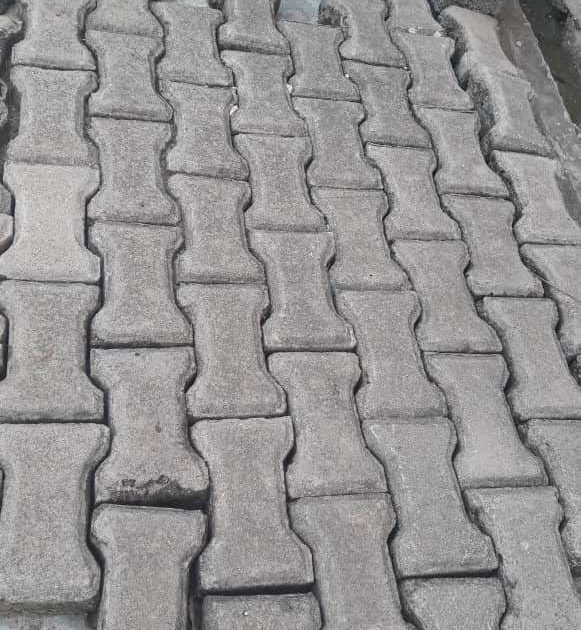THE COST EFFECTIVENESS OF USING BOLYN PAVING BRICK PRESS/MACHINE TO PRODUCE STRONG FLOOR PAVING BRICKS FOR MOTORABLE COMPOUNDS.
THE COST EFFECTIVENESS OF USING BOLYN PAVING BRICK PRESS/MACHINE TO PRODUCE STRONG FLOOR PAVING BRICKS FOR MOTORABLE COMPOUNDS.
- September 21, 2020
- Posted by: Bolyn
- Category: Brick machines, Cement sabilized soil, Floor paving bricks., General Construction, House Renovation, Interlocking brick, Latrite soil, Low cost construction, Manual brick presses, Stabilized bricks, Structural performance, Super bricks/blocks.

We all sometimes needed to pave our compound with Motor-able flooring components. We needed materials that is cost effective, strong and durable. We are often discourage by the high cost of concreting the the compound using granite, sand and cement. The construction market have Paving stones that many people are falling in love with. Bolyn constructions company limited have Paving brick presses/machines that are capable of been used to make cost effective Paving bricks. Bolyn paving machine make Paving bricks that are strong and durable even under motorable condition. This writer have used this technology to mold his own paving bricks since 1995 in Lagos and in 2007 in Ondo city, Nigeria. The paving bricks that are given as examples above have continue to perform very well.
SOME OF THE ADVANTAGES OF USING BOLYN PAVING BRICK TECHNOLOGY ARE-
1]. This technology uses majorly locally found materials for the production of the paving bricks.
2]. The machine used is locally made and easy to operate by the local operators.
3]. Cement requirement for the production of the paving bricks is low thus making the paving bricks cheaper than the conventional paving stones.
4]. The technology of paving bricks making is site based, this ensure that the paving bricks are not transported from site to site, doing this ultimately eradicate the high cost of transportation.
5]. Those who have the press/machine are able to make their paving bricks at their own pace.
6]. Labor cost can be regulated by those who own the brick press and over profitting by middle men are eliminated.
7]. The quality of the paving bricks made using this technology can be controlled and the strength of component is guaranteed.
8]. You can equally use Bolyn constructions company limited Standard multi-purpose brick press to make beautiful paving bricks. The floor paving pallets is inclusive of the items supplied with the machine.
9]. The use of paving bricks allow for the easy disposal of rain water, users also find paving bricks re- usable in cases were they have been removed to allow for structural alteration of the plan of the house or any facility where they were previously used.
MATERIALS USED FOR THE MAKING OF PAVING BRICKS.
These paving bricks are made by dryly mixing of Laterite soil called Mud or Filling sand with 10% or more Cement, the mixture is wetted and mixed again. This mixture form the body of the Paving bricks after compression. The facial of the Paving brick is made from a Sand and Cement in a ratio of 1:3, this is to guarantee wear resistance of the surface of the bricks. The wetted combination of the sharp sand-cement is spread on top of the main body of Laterite-Cement material, both are compressed together in the machine to achieve the Paving bricks. Newly made bricks are stacked on their edges and allowed to dry for one day before stacking them in fives for further curing. Curing is by wetting of the bricks for a minimum of 8days, preferably morning and afternoon.
RECOMMENDED LAYING PROCEDURE THAT GUARANTEE A LONGER LASTING FLOOR.
1]. All top soil are to be removed from the site before installation, this will guarantee that grasses will not have the nutrient for growth in the future.
2]. The site is leveled and plumbed very well to receive the next layer of materials.
3]. Sharp river sand can now be spread on the site of installation to form the bed of the paving bricks, this layer is another prevention measure against plant growth.
3]. The paving bricks are now plumbed level while been laid end to end. On completion of laying, a final sharp river sand material are filled into the spaces in between the paving bricks to close all gaps.
It is to be seen above that the ability to locally produced durable, good quality paving bricks in all part of the country is a wealth and employment creation ingenuity. We can help Africa to develop and stop rural to urban migration. The localization of sourcing and making of the paving bricks materials and labor will ensure the reduction in the prices of the inputs towards production of cost effective paving bricks.
